The only daughter of Cleopatra and Mark Antony, Cleopatra Selene II was taken prisoner by the Romans after her parents' suicides — but her story didn't end there.
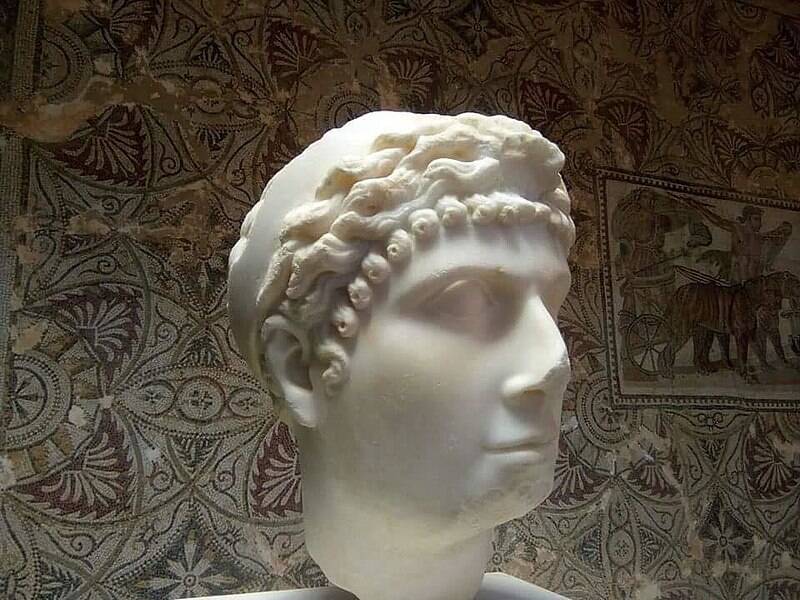
Public DomainA bust believed to depict Cleopatra Selene II at the Archaeological Museum of Cherchell in Algeria.
Cleopatra Selene II had a turbulent life from the beginning. Born to Cleopatra and Mark Antony amid their alliance following Julius Caesar’s assassination, Cleopatra Selene II entered the world during one of the most famous and tumultuous periods for Egypt and Rome.
As political allies and lovers, Antony and Cleopatra sought to strengthen their power by declaring their twin children — Cleopatra Selene II and Alexander Helios — the rulers of various territories across North Africa and Asia. Antony and Cleopatra’s ambitious plans crumbled, however, when they were defeated by their enemy Octavian in 30 B.C.E., leading both to die by suicide.
Cleopatra Selene II and Alexander Helios were soon taken prisoner by Octavian. She and her brother were initially paraded around in Rome, though they were later placed under the care of Octavia, Antony’s former wife. As Cleopatra Selene II grew up, she received a strong Roman education. But she also became one of the last links to Egypt’s Ptolemaic dynasty.
Mark Antony And Cleopatra’s Relationship — And Their Plans For Their Children
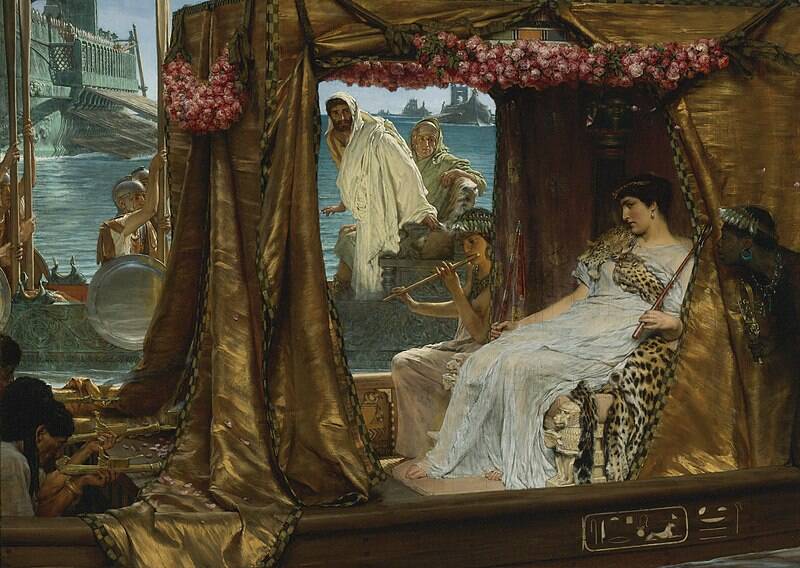
Public DomainThe Meeting of Antony and Cleopatra by Lawrence Alma-Tadema.
The story of Cleopatra Selene II begins with her parents Cleopatra and Mark Antony. Cleopatra was only 14 years old when Antony met her for the first time, and Antony was about 14 years older than Cleopatra. However, their fateful relationship would not begin until many years later.
After the assassination of Julius Caesar in 44 B.C.E., Antony successfully defeated Caesar’s opponents and requested Cleopatra to come visit him in 41 B.C.E. at his base in Anatolia, located in modern-day Türkiye.
Antony soon found himself captivated by Cleopatra, who was by then in her late 20s. As the Greek biographer Plutarch put it, “She was going to visit Antony at the very time when women have the most brilliant beauty and are at the acme of intellectual power.” Cleopatra then invited Antony to come see her in Alexandria, Egypt, an offer that he accepted.
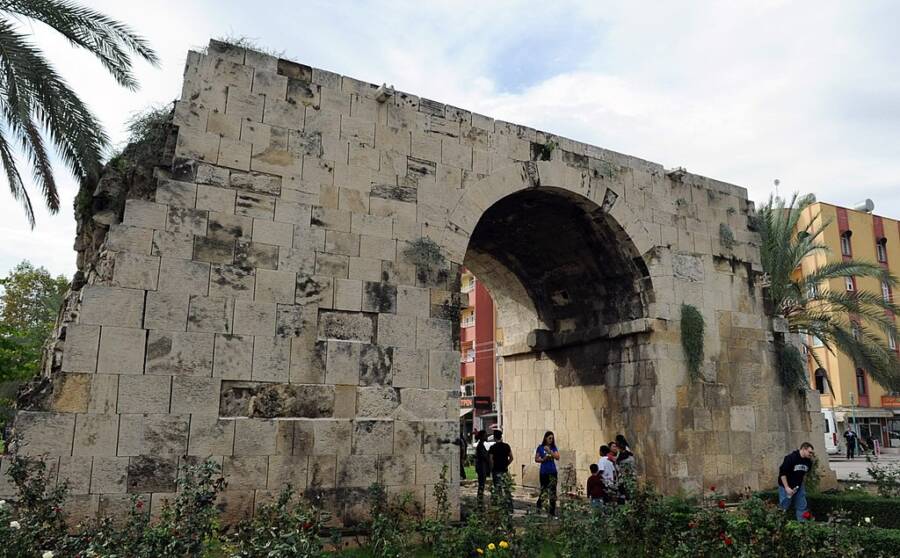
Public DomainCleopatra’s Gate in Tarsus, where Cleopatra met Mark Antony in 41 B.C.E.
Antony and Cleopatra became lovers, and by 40 B.C.E., Cleopatra had given birth to the couple’s twins: Alexander Helios and Cleopatra Selene II.
Helios, representing “the sun,” and Selene, representing “the moon,” were meant to symbolize a new era. Cleopatra hoped that Antony would defeat Parthia to the east, similar to Alexander the Great’s conquest of Persia.
Antony would not meet his children until they were three years old, but he accepted them as his own immediately. In 36 B.C.E., Cleopatra gave birth to another son, Ptolemy Philadelphus, also fathered by Antony.
In the following years, Antony and Cleopatra would make grandiose plans for their children. When Cleopatra Selene II and Alexander Helios were just babies, they were declared the rulers of various regions. Alexander Helios was declared king of Armenia, Media, and Parthia, while Cleopatra Selene II was bestowed with Crete and Cyrene (located in modern-day Libya). Young Ptolemy Philadelphus was declared king of Syria, Phoenicia, and Cilicia. Meanwhile, Cleopatra’s eldest son, Caesarion (believed to have been fathered by Julius Caesar), was given the especially lofty title of King of Kings.
But Antony and Cleopatra’s deaths in 30 B.C.E. cut these plans short.
The Upbringing Of Cleopatra Selene II After Her Parents’ Deaths
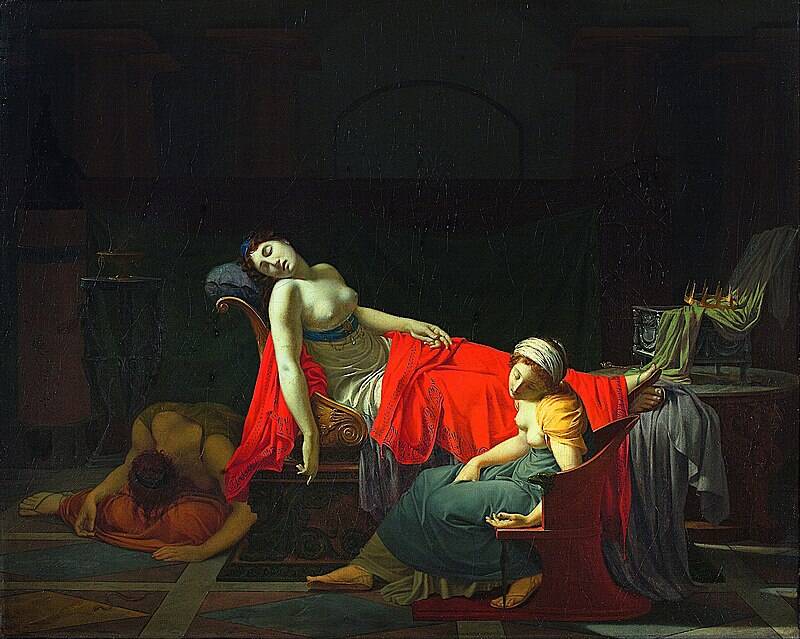
Public DomainDeath of Cleopatra by Jean-Baptiste Regnault.
Around 33 B.C.E., Mark Antony had divorced his wife, Octavia the Younger, and married Cleopatra. This sparked enormous resentment from Octavian, who was Octavia’s brother. The controversial divorce, coupled with Antony’s willingness to help Cleopatra with her own political ambitions, eventually led to the breakout of a brutal war between Antony and Octavian.
At the Battle of Actium, Antony and Cleopatra’s forces were defeated by Octavian. Then, as Octavian’s forces invaded Egypt, the couple died by suicide to avoid being taken prisoner, humiliated, and executed.
Cleopatra’s eldest son Caesarion was soon executed. But Cleopatra Selene II, Alexander Helios, and Ptolemy Philadelphus were taken prisoner by the Romans. From there, Ptolemy Philadelphus’ fate is uncertain, though it’s been speculated that he died soon after he was taken captive.
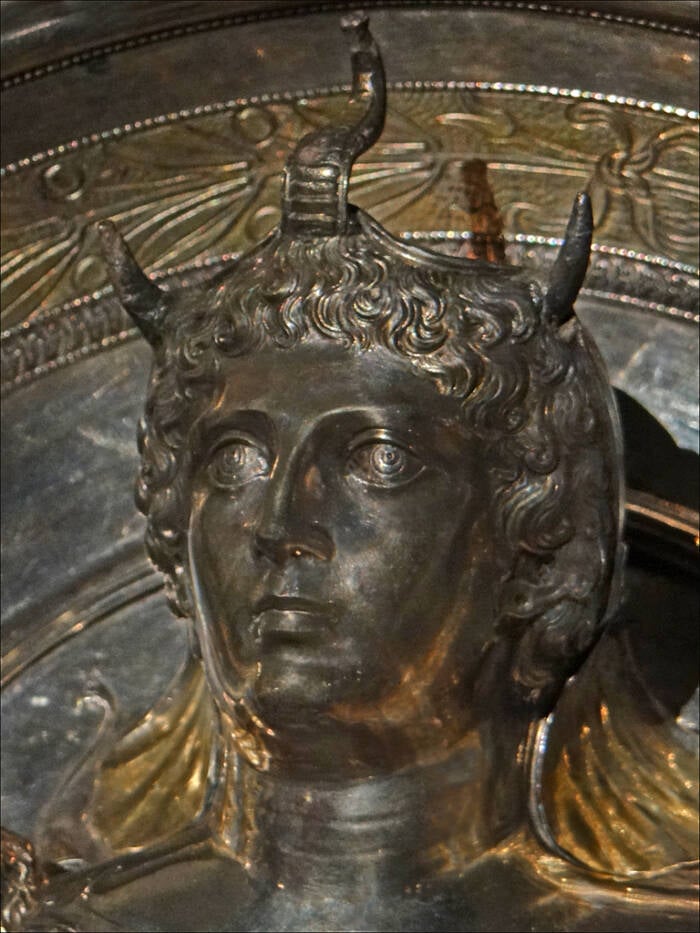
Public DomainA possible depiction of Cleopatra Selene II, believed to date back to the 1st century B.C.E. or 1st century C.E.
After Octavian brought Cleopatra Selene II and Alexander Helios back to Rome, he paraded the twins in the street in golden chains, mocking their celestial names by dressing them up as the sun and the moon. Only about 11 years old at the time, Cleopatra Selene II and Alexander Helios were also forced to walk in front of an effigy of their deceased mother.
Despite this cruel treatment, Octavian later had the children placed in the care of his sister, Octavia. Though they were technically still in captivity, they lived in relative comfort in the household. From there, Alexander Helios disappears from the historical record. Historians speculate that he died from illness, but more ominous theories have pointed to assassination.
As for Cleopatra Selene II, she not only lived to adulthood but received a strong Roman education, learning Greek and Latin literature, philosophy, and rhetoric. She also became fluent in numerous languages. Cleopatra Selene II was said to be just as intelligent as her mother — and more beautiful.
Perhaps most notable, Cleopatra Selene II was one of the last links to the Ptolemaic dynasty of ancient Egypt. And she never forgot her roots.
Cleopatra Selene II’s Oft-Overlooked Legacy As A Monarch Of The Augustan Age
When Cleopatra Selene II grew older, Octavian arranged a marriage between her and Juba II, the King of Mauretania (located in present-day Morocco and Algeria). Like his future wife, Juba II had been raised in Rome following his father’s defeat (in this case, by Julius Caesar in 46 B.C.E.).
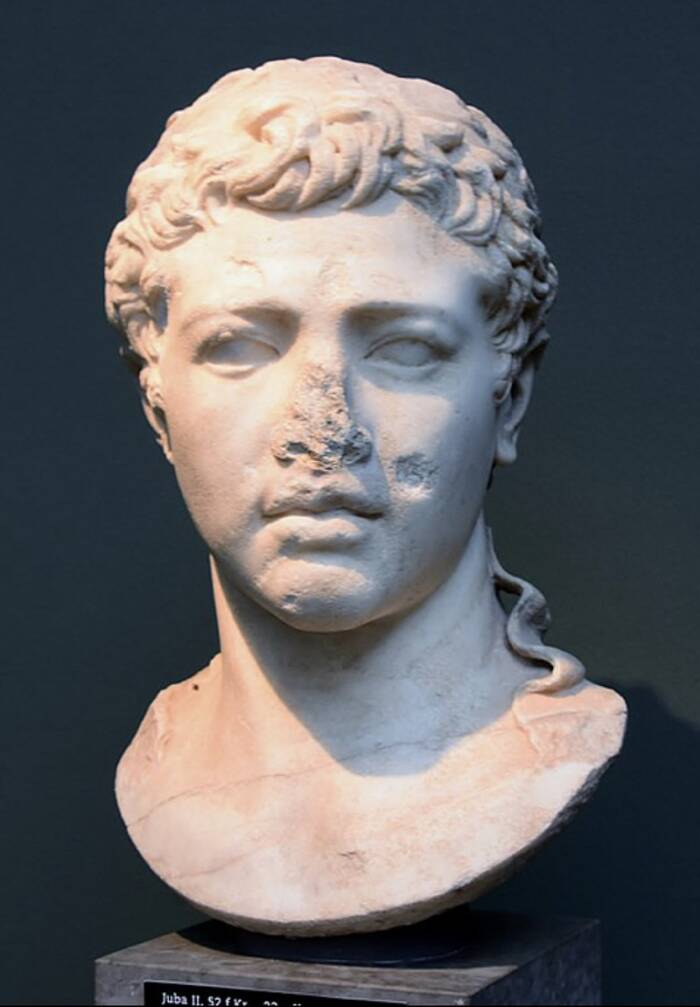
Wikimedia Commons/CC BY-SA 2.0A bust of Juba II, King of Mauretania, from the early 1st century C.E.
Despite also being paraded through Rome as a captive, Juba II was given a somewhat comfortable early life and a good education. Eventually, he befriended Octavian, which would prove to be beneficial later on — especially since Octavian would go on to become Emperor Augustus.
Around 30 B.C.E., Octavian had declared Juba II as King of Numidia. And about five years later, Juba II and Cleopatra Selene II were married. During their marriage, the couple had two children: Ptolemy of Mauretania and a daughter whose name is unfortunately unknown today.
The couple were soon instructed to rule over the client kingdom of Mauretania. Under the watchful eye of the Romans, they proposed new regulations, city plannings, and public works. They drew inspiration from artists and architects from across the Mediterranean while developing the kingdom. Under their rule, Mauretania became notably prosperous.
Though Cleopatra Selene II now held the title of Queen of Mauretania, she never forgot where she came from. She found creative ways to honor her mother’s legacy in Mauretania by displaying portraits of past Ptolemaic leaders and proudly describing herself as “Cleopatra, daughter of Cleopatra” — even though her mother was considered an enemy of Rome.
Cleopatra Selene II’s success as a monarch lasted until her death around 5 or 6 C.E. She was only about 35 when she died, meaning she lived an even shorter life than her mother. Though the circumstances of her death remain a mystery, most historians believe she died of natural causes.
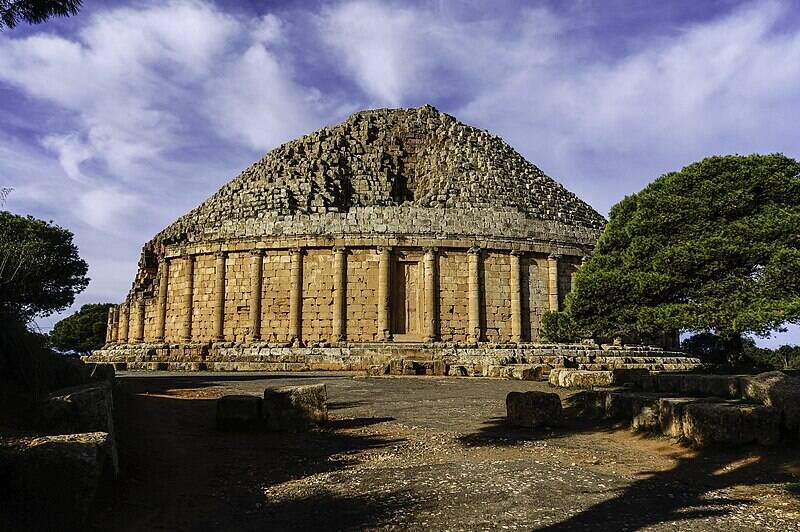
Wikimedia Commons/CC BY-SA 2.0The Royal Mausoleum of Mauretania, the original tomb of Cleopatra Selene II and Juba II.
Cleopatra Selene II was buried in the Royal Mausoleum of Mauretania in modern-day Algeria, which was commissioned by her husband. Upon her husband’s death in 23 C.E., the two were reunited and entombed together.
Their son would go on to rule Mauretania until Emperor Caligula had him executed. Without a male heir, Mauretania was divided into two provinces, leaving the influence of Juba II and Cleopatra Selene II a thing of the past.
Though Cleopatra Selene II’s impact faded from history, her legacy as one of the last of the Ptolemaic dynasty endures in ancient records, archaeological monuments, and even pop culture, despite the missing pieces of her story.
After reading about Cleopatra Selene II, learn about the search for Cleopatra’s tomb. Then, dive into the true story of Commodus, one of the most disastrous Roman emperors in history. Finally, read about 11 of the most famous gladiators of ancient Rome.





